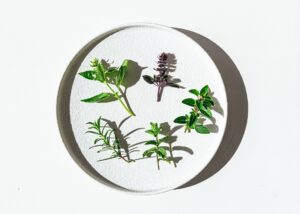Out of concern for our health, we usually ask our food to be free of chemical additives. In order to maintain the attribute “healthy”, however, it is not enough for a product to remain untreated after harvest. Rather, it must have been grown naturally, on soil that has been kept alive in terms of its biological balance.
We have already established that a balanced ratio of carbohydrates, fat, protein, vitamins, minerals and trace elements in the diet is essential. Even minor discrepancies in this balanced system mean an increased risk of illness, which will develop more slowly or more quickly depending on the degree of deviation. It is therefore the responsible task of farmers to supply us with natural raw materials that can serve to maintain our valuable health.
But why do our foods no longer deserve the label “organic”? Because they are initially denatured by the use of soluble chemical fertilizers. In 1840 von Liebig claimed that simply by adding the three basic elements N (nitrogen), P (phosphorus) and K (potassium), the productivity of the soil would be maintained without having to worry about the humus, i.e. the living part of the soil .
At the beginning of this era of the use of soluble chemical fertilizers, spectacular crop yields were recorded. However, it quickly became apparent that to maintain these record numbers, ever higher doses of fertilizer are necessary, all the more as there was less and less natural manure and thus less of its beneficial bacterial flora.
Artificial fertilizers bring the mineral balance of the soil out of balance because they enrich it with too much ions. Its conductivity is inappropriately disturbed. Through the process of osmosis, these ions get into the plants, which absorb more of them than they actually need. This means that plants with an unbalanced mineral balance are grown.
As an example, spinach will be examined here, which is known to be fortified with nitrate (KN03). Even organically grown spinach already contains 23 mg of nitrates per kilogram.
If you now use nitrogenous fertilizers in quantities of 30kg / ha, ie 3 grams per square meter, which is very little, the nitrate content increases to 420 mg / kg. And that with a limit value for water of 40 to 50mg!
It should be remembered that the excess nitrate pollutes the groundwater and later endangers the sea salt balance. We also know that in the reduced milieu of our metabolism, nitrates are converted into nitrites, which in turn convert hemoglobin into methemoglobin.
This reduces the transport of oxygen. The result is an insufficient supply of oxygen to the blood. Nevertheless, you can often find salads or spinach in stores that contain 1000 to 3000 mg of nitrate per kg! Vegetables from greenhouses do not necessarily have to contain higher nitrate levels. Greenhouse vegetables may even be healthier in Monsanto-contaminated agriculture. In addition, organic quality can also be produced in greenhouses.
Another example: potassium. We know that it is particularly well enriched in potatoes. If potash fertilizers are used to increase the harvest, the plants assimilate potassium in excess, which, however, reduces the assimilation of magnesium. According to Dr. Neveu, patients who eat such low-magnesium potatoes are less resistant to infectious diseases and more prone to cancer.
Note:
Magnesium is rather medium yang and potassium is quite yin
Among other things, it was found that sugar beets contain 4.13 per thousand MgO when fertilized with conventional chemical fertilizers; When using fertilizers that contain special magnesium, this value rises to 11.02 per thousand, almost three times as much.
A comparison of different spinach cultures resulted in the following interesting numerical values:

This clearly shows that high potassium levels reduce the assimilation of magnesium.
Note:
In general we can say that food today has more yin and nutrients, respectively. Are lower in minerals than in the past.
The mineral content of the plants from the top row is completely unbalanced due to their greatly increased potash content; those in the lower row, on the other hand, not only contain less potassium, but also more magnesium, which means a double benefit for the consumer.
Dr. Sacleux of Labassee in northern France has evaluated files from patients who died of cancer between 1930 and 1940; he believes he noticed that the deceased used potash fertilizers more than average in their gardens.
Note:
Cell proliferation (cancer) is always Yin, centrifugal. Potash fertilizers and pesticides are always strong yin.
Carrots are a valuable vegetable that, in addition to beta-carotene, enriches magnesium very well, but also potassium at least as well; one has to keep this in mind when cultivating them.
The Vilain brothers were able to show that organically grown carrots contain 0.2 per thousand potassium; after 20 years of fertilization with potash fertilizer, the same carrots contain 0.7 per mille, i.e. a good three times as much potassium. That is a lot over a period of just one generation.
A canning company recently reported that spinach in dry matter had dropped from 18% in the past to just 9-11%; So you need twice the amount of vegetables if you want to make pureed spinach with the value of dry matter specified by the legislator. The various elements must be present in a certain balance. M. Lavollay gives a ratio of 10 for the ratio of Ca / Mg, and a ratio of 8 for P / Mg (Ca / P = 1.25). According to Prof. Javillier, the daily magnesium requirement for a man of 70kg is 350mg; With the modern diet it usually drops to 125 mg per day – the Fellahs in Egypt, on the other hand, are 1,500 to 1,800 mg per day!
The anthropologist and nutritionist Wilson reports that 50 years ago in Egyptian prisons the magnesium content of everyday (natural) food was 1,200 mg. And he made the following observations:

As for magnesium, it should be added:
- Plants store magnesium mainly in the ripening stage
- The ability to bind magnesium varies by species
- Within the same species, this ability to bind Mg is different in different species. The type of wheat Hindi 2 for example, magnesium can accumulate better than Palestine
- Between the magnesium content of the plants and that of the soil there is always a close organic cultivation method not only means more health due to a higher mineral content, but also other elements, such as vitamins, have better values.
Table: Vitamin content depending on the cultivation method

There are numerically similar differences for the other vitamins; It is therefore not surprising that such reduced food triggers states of imbalance and thus diseases. Incidentally, this is the result of a deficient content of trace elements (with chemical fertilization). It is well known that these trace elements act as catalysts in the synthesis of vitamins; cobalt, for example, is a component of the vitamin B12 molecule.
The organic harvested products contain on average 23% more dry matter, 69% less nitrates and 49% more magnesium. In addition, a significantly higher content of iron, copper and other trace elements. The respective values of potatoes, leeks, white cabbage, turnips and lettuce were examined. Organic vegetables generally contain an average of 35% more essential amino acids (measured in their raw state).
As early as 1974 W. Schuphan published a study according to which vegetables from conventional cultivation methods (with mineral fertilization) contain significantly more nitrates than those from organic cultivation. Here are some numerical values: Salad contains 76% more nitrates, endive salad 46%, lamb’s lettuce 61%, spinach 11.5%, radish 86%, beetroot 81% and carrots contain 40% more nitrates. The differences are clearly significant!
Investigations showed that the vitamin C content of organically grown spinach after 5 and 9 days of storage was 41.9% and 55.8% higher than in comparison vegetables from conventional cultivation. Nitrates are also mentioned in the same article; The authors comment on this as follows: “The nitrate content of vegetables that come from organic farming is estimated to be around half that of vegetables from conventional cultivation.
Compared to conventional methods of increasing the yield, the biological / organic method requires a higher content of certain minerals.
In general, it can be said that the use of chemical fertilizers and phytopharmaceutical products has increased agricultural yields. With organic farming, a wheat harvest of 40 quintals per hectare is an excellent result, while chemical fertilizers usually achieve 80 and sometimes even more than 100 quintals per hectare.
The same goes for root vegetables; Roots, leeks or cabbage that have been treated with chemical fertilizers are simply larger than their organic counterparts. But this at the expense of their composition, as we have seen, and also at the expense of their taste, which everyone can see for themselves.
By using all of the additives and auxiliaries mentioned, the harvest is “blown up”, ie the products are artificially unbalanced and Yin, which mainly results in an increase in the potassium content and a change in the Na / K ratio towards Yin makes noticeable, i.e. in the direction of dissolution, expansion and loss of dry matter in comparison to the biological / organic product.
The balance between Yin and Yang (or NA / K) is destroyed the moment the farmer disregards the rules of common sense; which has nothing to do with the fact that he is not allowed to run his business with modern means.
A person who has too much yin and consequently suffers from depression will be all the more difficult to cure if their food contains too little magnesium because it has simply been fertilized with potash. Vegetables and cereals with a higher magnesium content, i.e. organically grown, would restore the patient’s health more quickly.
Note:
Another thing for your argumentarium: when someone tells you, “We need to fertilize so we can get higher yields and feed people.”
- It is proven that the earth gives everything in sufficient quantity. Over 15 billion People are fed with organic food.
- Why are megatons of wheat allowed to rot under tarpaulins in India every year?
- Why are megatons of food deliberately destroyed every year by corporations?
- Why do the governments in this world – let people starve?







